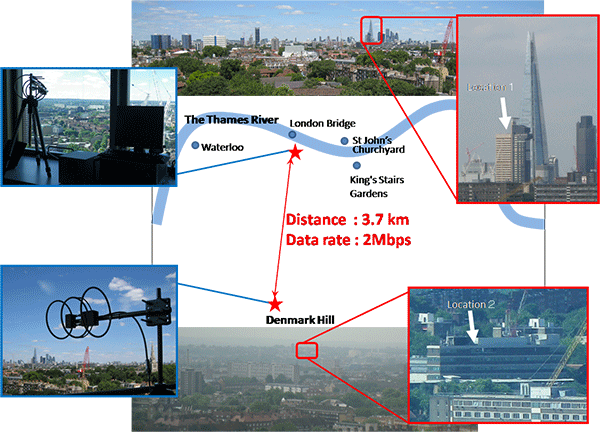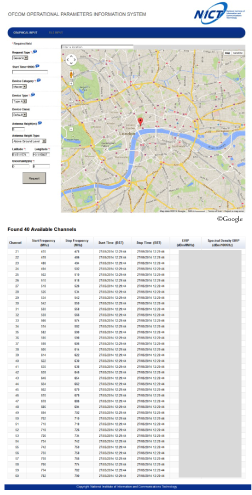- Successfully deployed a 3.7 km link between two locations, and a broadband wireless communications link at more than 40 Mbps throughput, both in central London - a large city which has many TV broadcasters and many active wireless microphone users.
- Information about available channels and maximum transmission power in each channel is provided by a database developed by NICT and has passed the qualification tests for the Ofcom’s TV White Spaces Pilot.
- Contributions to the development of white space communications regulations of the UK and other countries are expected
The National Institute of Information and Communications Technology (NICT, President: Dr. Masao Sakauchi) has successfully deployed the mobile broadband communications systems at more than 40 Mbps throughput, and has successfully established a 3.7km link between two locations within the framework of the TV White Spaces Pilot organized by Ofcom, the communications regulator of the UK. The trials of NICT systems have been deployed in central London, a big city which has many incumbents to be protected, for example TV broadcasters and active wireless microphone users. NICT has also successfully developed a white space database which passed the qualification tests to be included in the Ofcom’s databases list. This database provides protection from interference to the incumbents by calculating and providing information about available channels and maximum transmission power in each channel to the white space systems. NICT’s trials which deploys TV white space mobile broadband communications based on database information in a crowded city is the first of its kind. The experiences obtained during the trials are expected to contribute to the development of TV white spaces regulations in the UK as well as other countries in the world.






























